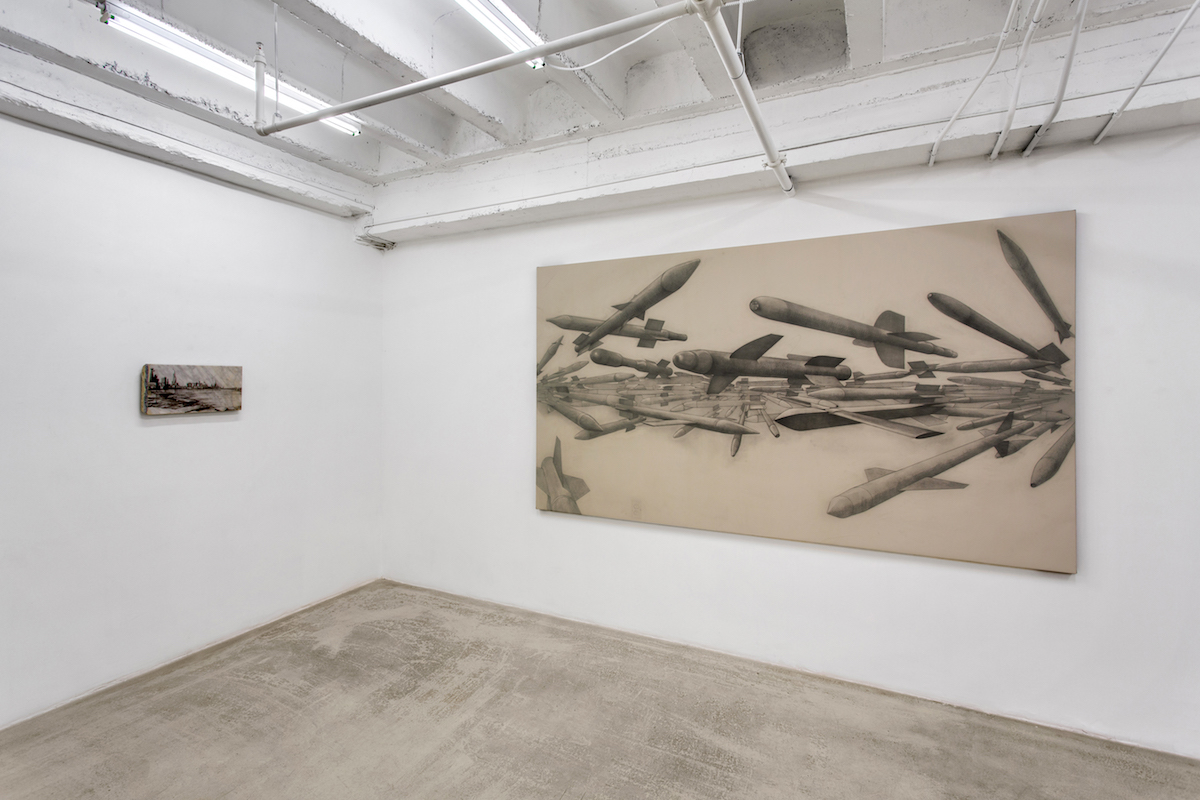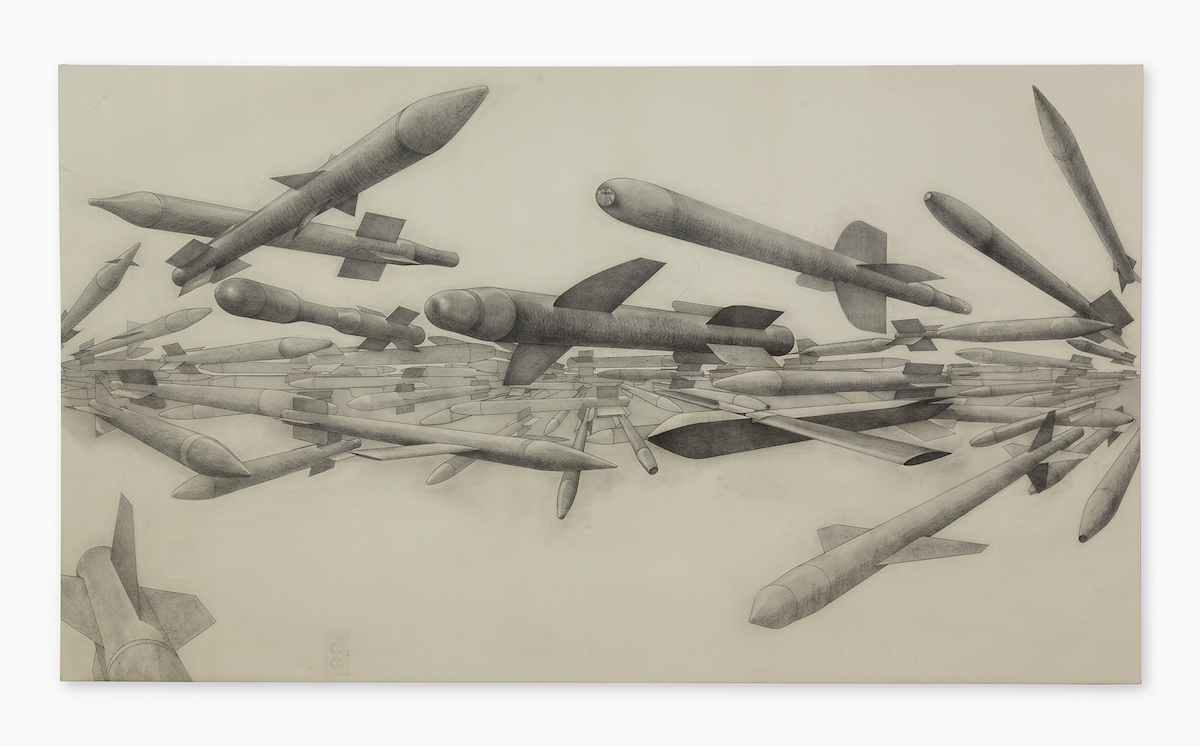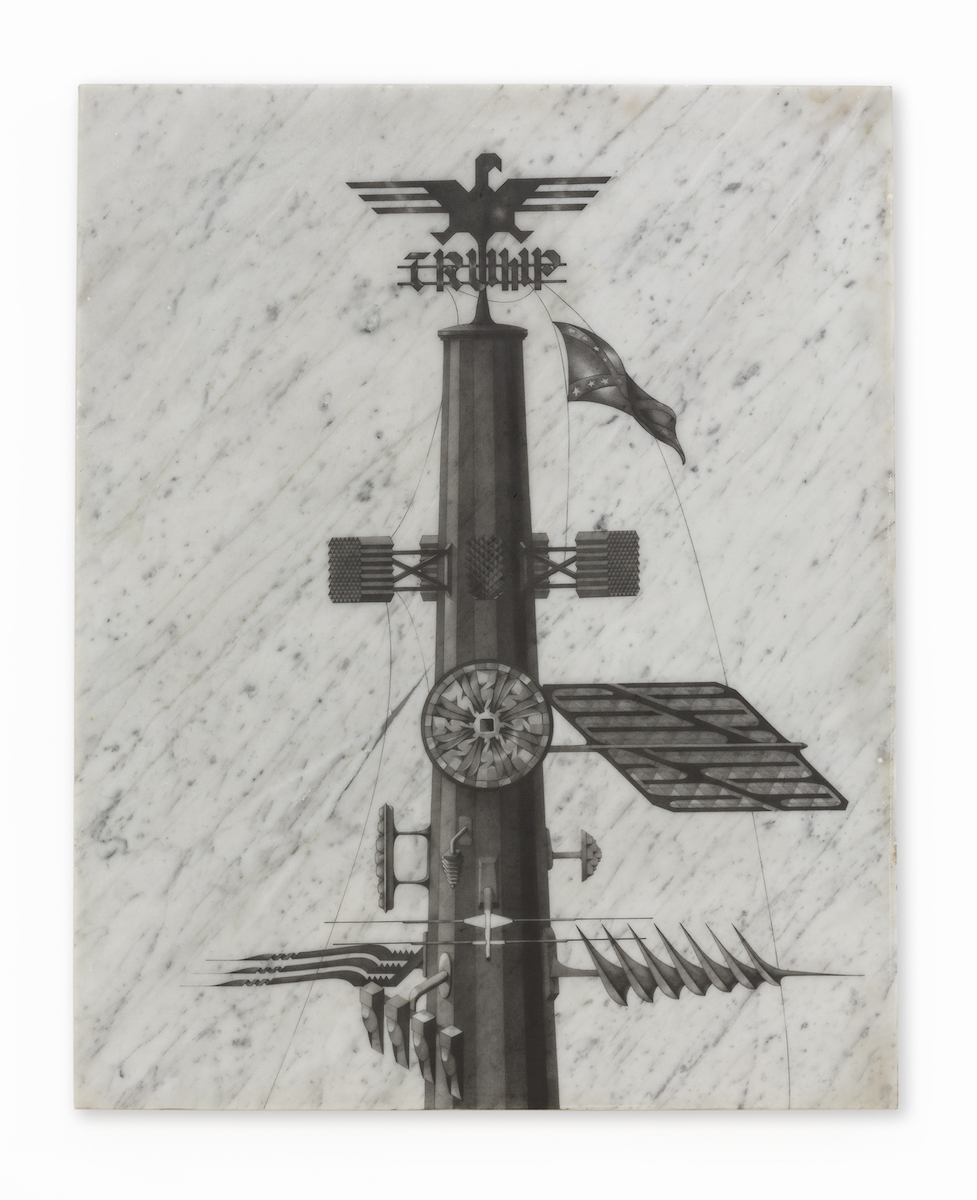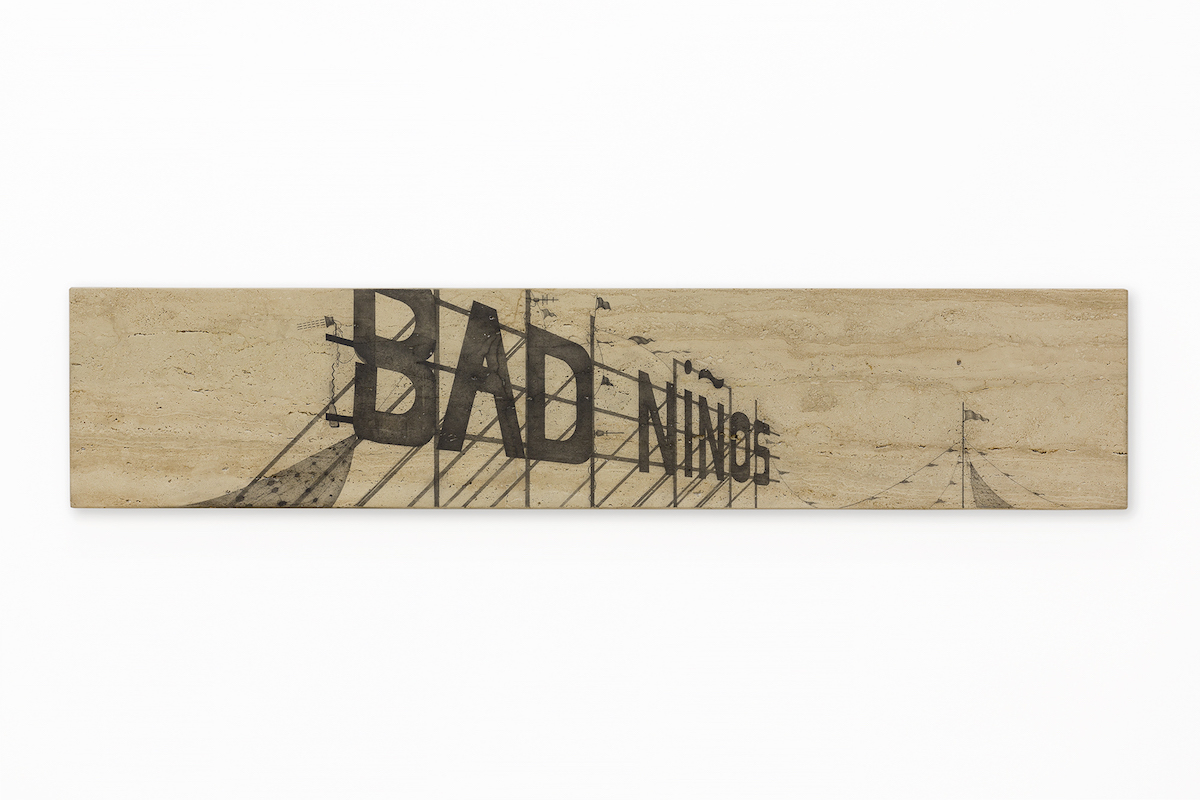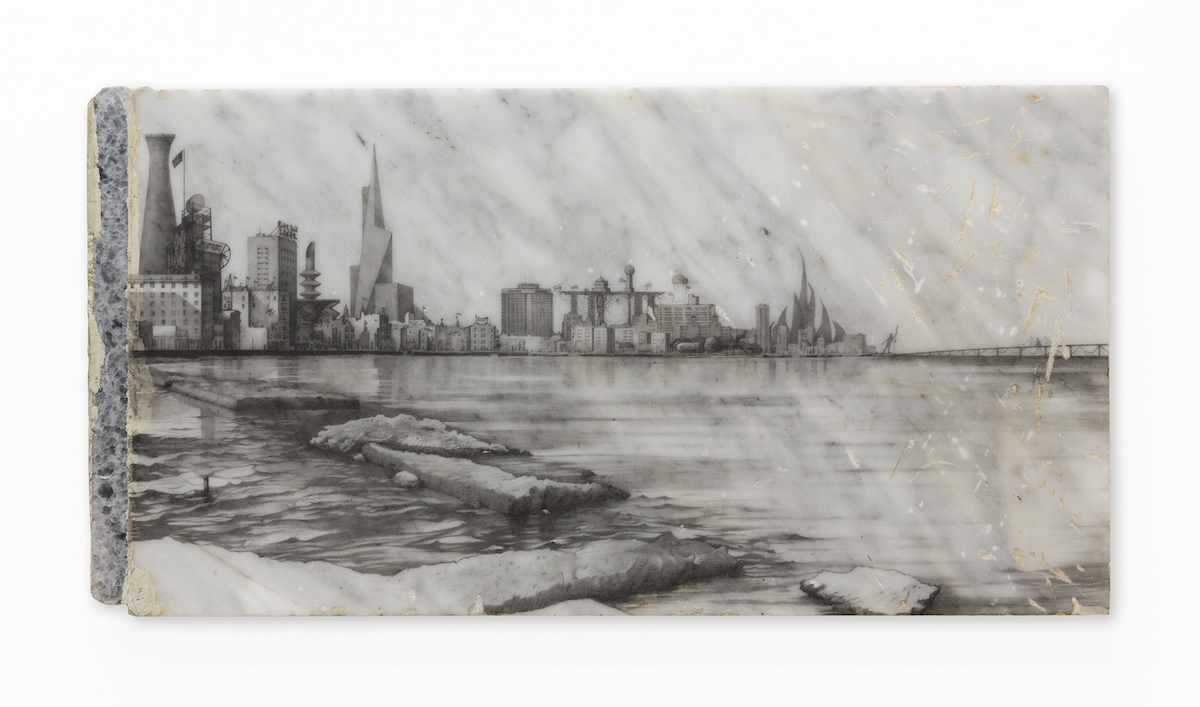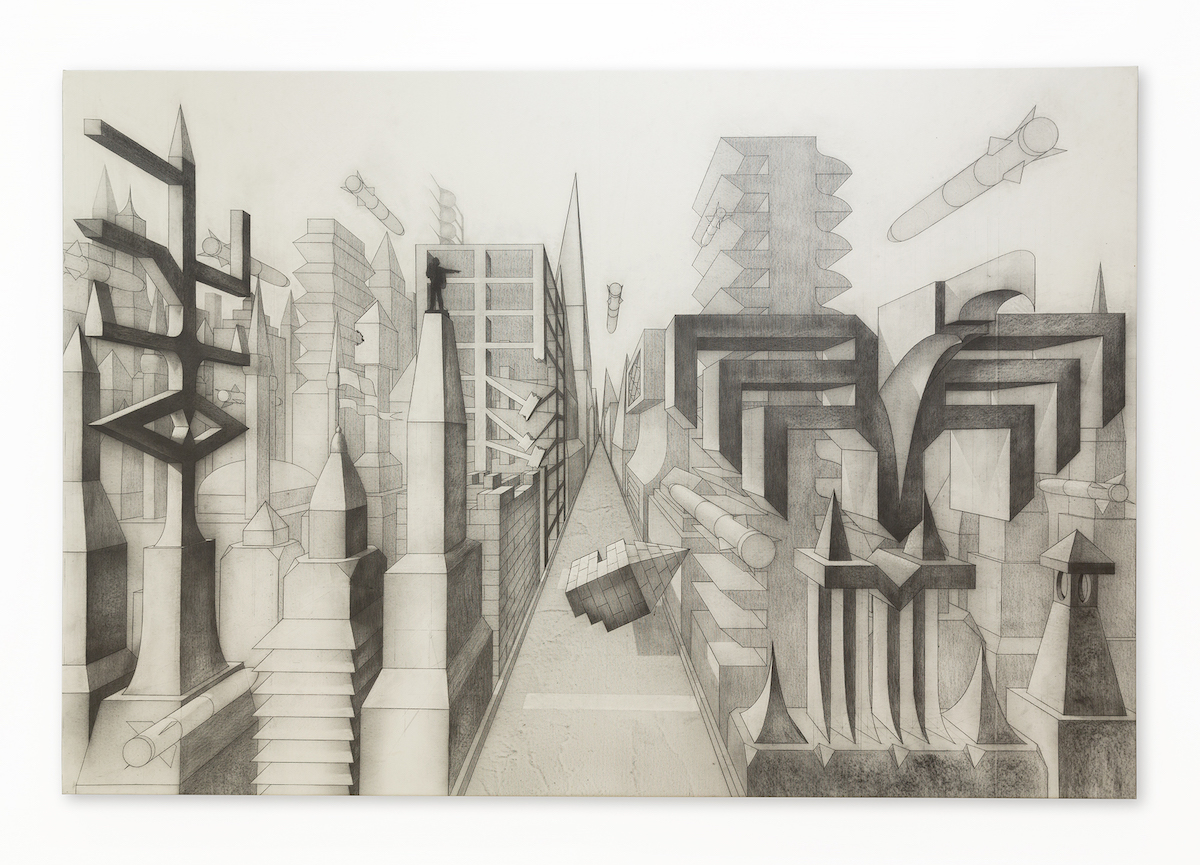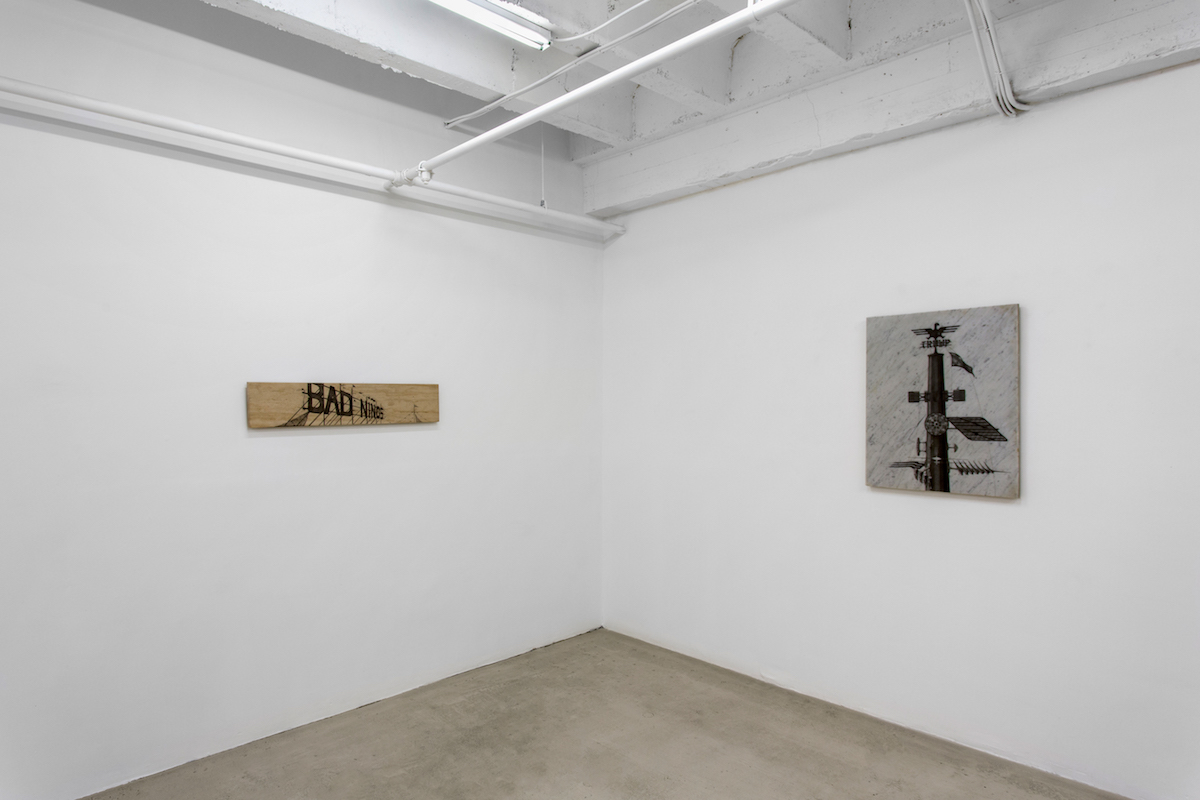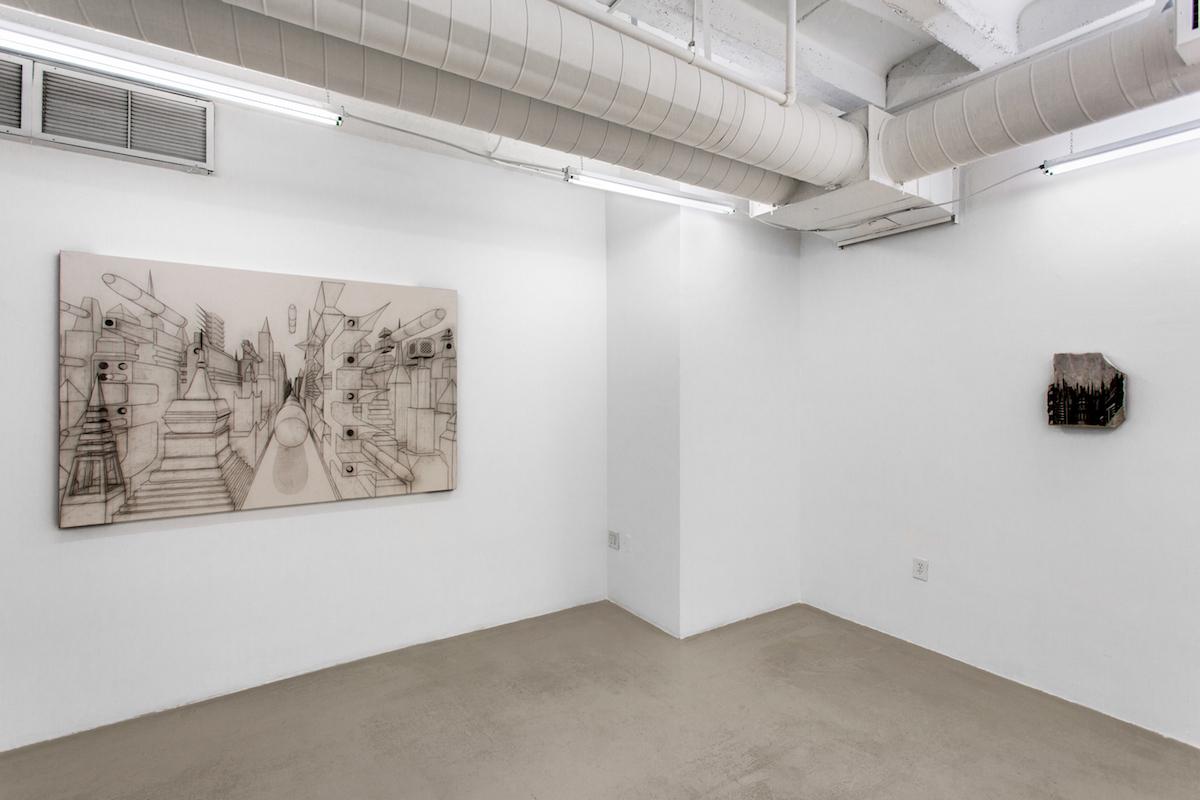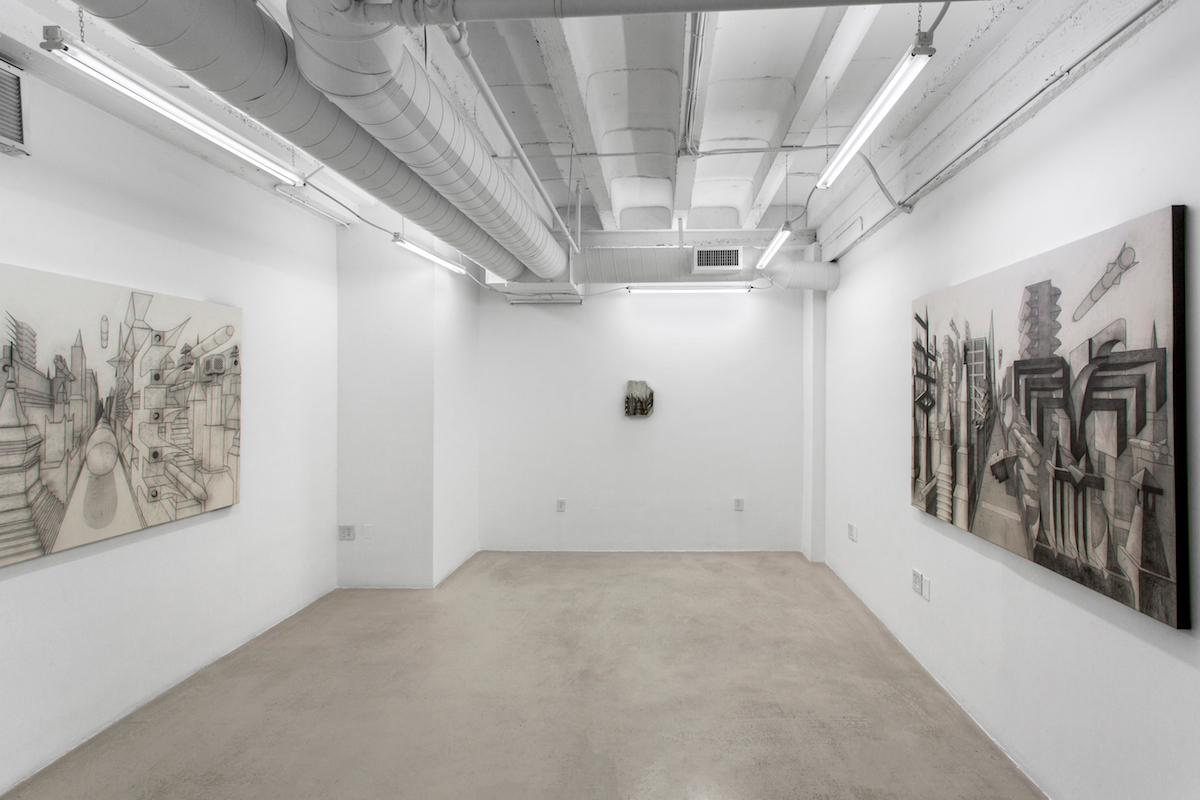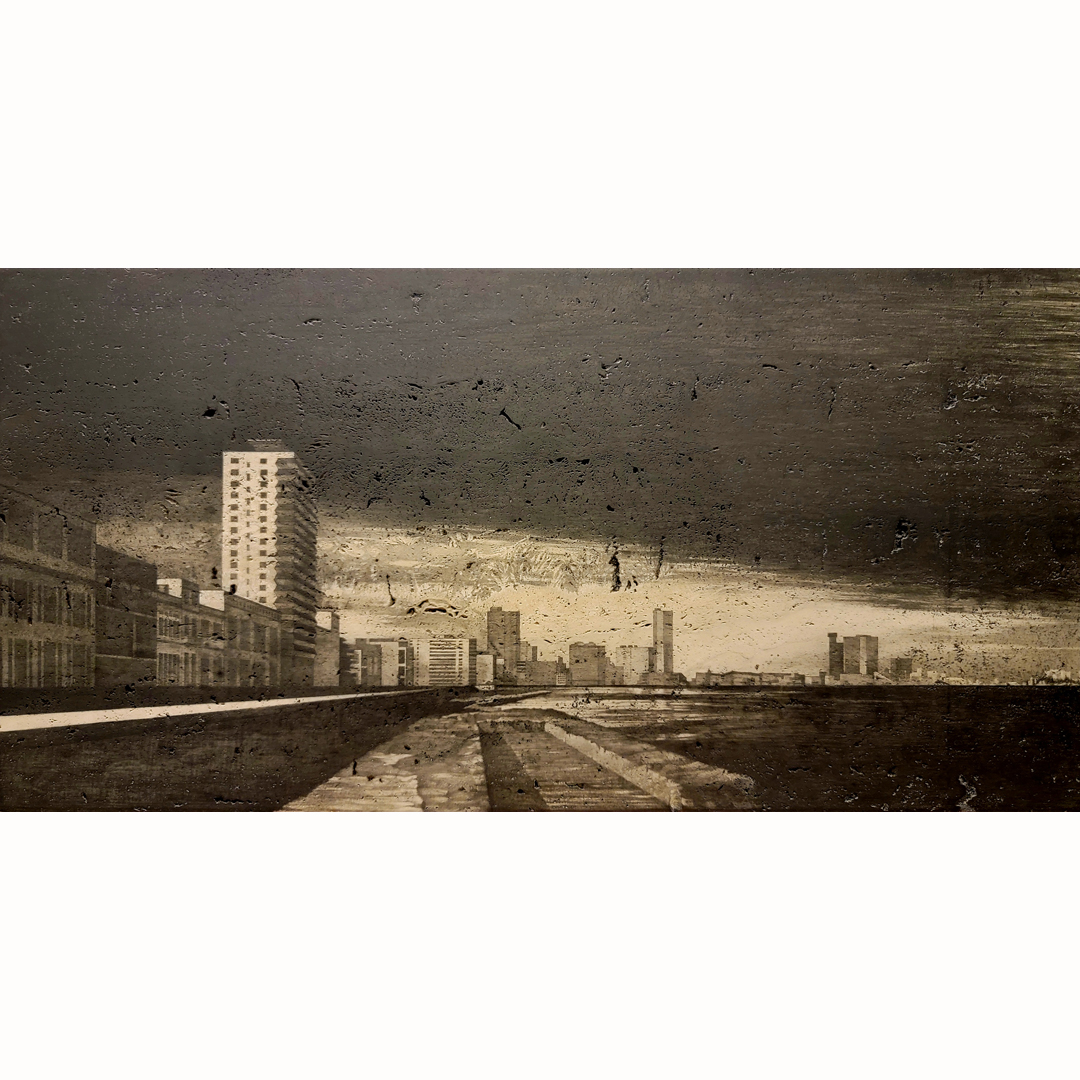Bad Niños
Glexis Novoa
David Castillo Gallery is proud to present Glexis Novoa’s Bad Niños.
Bad Niños by Glexis Novoa imagines the utopias of revolutions past, present and future, and evidences the precarious grounds on which ideologies take form. Sourcing fragments of marble—taken from the once stately but long deteriorating edifices of Havana—as his canvasses, Novoa renders the grand, anachronistic architectures of future regimes with layered references to those past. The cracked, crumbling stones bear witness to these drawings and the traumas caused to the built environment, and its people, in the name of political construction.
Dystopia and anti-utopia are not interchangeable, and as terms describe parallel conditions which emerge from diametrically opposed motives: dystopiadescribes a deliberately oppressive society, built from its foundations as a structure of tyranny; while anti-utopia describes a more complex circumstance where the conditions for building utopia fail, and the results amount to those of a dystopian society. Endemic to the construct of anti-utopia is the ideological verve and faith that the restructuring of civilization is a net positive position towards the improved quality of life and prosperity of its people. Novoa’s imagery falls somewhere along this binary, between the black and white moralities of the dystopian/anti-utopian impulse; neither decidedly malicious nor benevolent, but altogether counter to a utopian ideal.
Novoa’s invented urban landscapes—the paradoxically bleak yet handsome architectures of authoritarianism—borrow from the visual vocabularies of widespread, twentieth-century nationalisms and their various programs of propaganda across the West. Overlapping influences of Futurism and Neoclassicism feature in these renderings as historical echoes to Italian and German fascism, and their respective nation-building architectural schemes. Shows of military force by way of missiles, flags, sloganeering and monument-building isolate a distinctly political language in these pieces, where Novoa plays with the symbolisms of state-sanctioned mythologies and truth-spinning.
Nodding towards the rise of reactionary, nationalist movements today, Novoa grounds a number of his works in the current political moment. For Novoa, the threat of bad niños is a political misdirection, and through his drawings re-directs attention towards the mounting oppressions exercised by governing bodies. In many ways, Novoa’s works détourn the public messaging strategies of ideological circulation, divorcing truth from propaganda.
Bad Niños politicizes the city and its infrastructures as nationalist constructs; the exhibition looks forwards and backwards in time, and reflects on the looming possibilities of the current political landscape. The soft power of architectural propaganda is a powerful tool of ideological enterprise, and here Novoa provokes an understanding of society’s trajectory as a metaphor of history repeating itself.
Glexis Novoa was born in Holguin, Cuba and received his B.A. from The National School of Art, Havana. He lives in Miami, with studios in Havana and Miami. Major work by the artist is currently on view in Adios Utopia: Dreams and Deceptions in Cuban Art Since 1950 at The Museum of Fine Arts, Houston. Since 1987 his work has been exhibited nationally and internationally and has had solo exhibitions at the Cheekwood Museum, Nashville, Tennessee; Lowe Museum, Coral Gables, Florida; Worcester Art Museum, Worcester, Massachusetts; Locust Projects, Miami, Florida; Miami Art Museum, Miami, Florida; The Snite Museum of Art, University of Notre Dame, Notre Dame, Indiana; Museo Nacional de Bellas Artes, Havana, Cuba, among many others. He has been awarded The Joan Mitchell Foundation Grant and Cisneros Fontanals Art Foundation Grant among others. Novoa’s work is in many institutional collections including Centro Wifredo Lam, Havana; Cisneros Fontanals Art Foundation, Miami; Ludwig Forum Fur Internationale Kunst, Aachen, Germany; Museo Nacional de Bellas Artes, Havana; Perez Art Museum Miami; and others.
